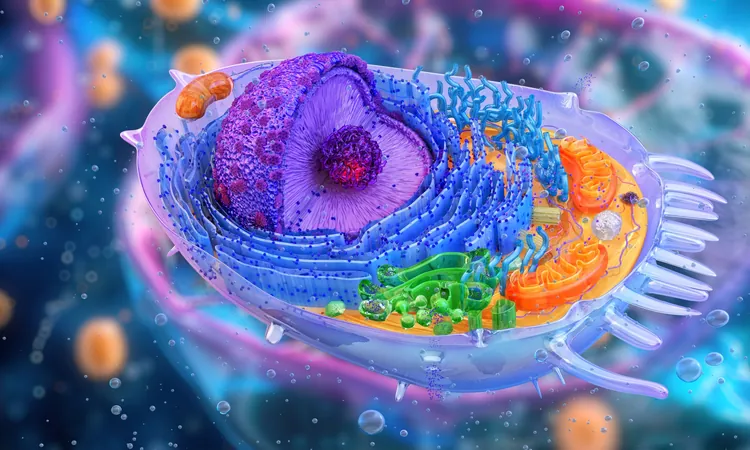
Catastrophic Coral Bleaching Strikes Australia's Great Barrier Reef: A Call to Action
2025-01-23
Author: Rajesh
Catastrophic Coral Bleaching Strikes Australia's Great Barrier Reef: A Call to Action
In a groundbreaking study, scientists have revealed that Australia’s Great Barrier Reef is facing an unprecedented crisis as coral bleaching has reached what they are calling “catastrophic” levels. The alarming findings showcased that more than 50% of the coral monitored near One Tree Island suffered fatal consequences due to last year’s extreme thermal events.
Record High Ocean Temperatures: The Main Offender
The summer of 2024 has been recorded as the hottest on record for the reef, contributing to its seventh mass bleaching event. The study, led by experts from the University of Sydney, highlighted that a staggering 462 coral colonies were closely observed over a five-month period beginning in February during the peak of an oppressive marine heatwave. By May, approximately 370 of these colonies had already turned white, a sign that they were expelled of vital symbiotic algae. By July, 52% of these bleached corals had perished.
The core issue driving this dire situation is climate change, fueled by the rampant burning of fossil fuels, which significantly raises global temperatures. Additionally, the weather phenomenon known as El Niño played a crucial role in exacerbating the heating of ocean waters in this region.
A Grim Future for Coral Species
Certain coral species are facing a grim fate, with mortality rates reaching as high as 95%. Researchers have noted troubling signs of “colony collapse,” where dead coral skeletons disintegrate into rubble, undermining the structural integrity of the reef. One species, the Goniopora, was found to be suffering from black band disease, a condition that attacks the coral’s tissue leading to widespread mortality.
Maria Byrne, the lead author of the study, emphasized the critical role coral reefs play in biodiversity, food security, and coastal protection. Despite being located in a protected area, this section of the reef was still vulnerable to the harsh heat that triggered this catastrophic bleaching event.
The Great Barrier Reef: A Marvel Under Siege
Spanning nearly 133,000 square miles, the Great Barrier Reef is recognized as the largest coral reef system on the planet. It boasts over 1,500 species of fish and 411 species of hard corals. Economically, it generates billions for Australia’s economy, especially through tourism, attracting visitors eager to witness its beauty. However, the recent findings underline that mass bleaching is becoming a recurring event every two years, stressing the need for immediate global action to meet climate targets and reduce emissions.
A S.O.S. from Scientists
“This research serves as a wake-up call not only for policymakers but the global community,” said Ana Vila Concejo, co-author and expert in geosciences. “The resilience of coral reefs is being tested as it never has been before, and we need to implement effective strategies to bolster their endurance against climate change.”
The implications of this bleaching event extend far beyond ecological devastation; it affects the livelihoods of coastal communities who depend on the reef for fishing and tourism. The findings also point to the need for heightened awareness and action, as resilient coral species have begun to show signs of disease and death.
“This is not just an environmental issue; it’s a socio-economic one that requires immediate and impactful management interventions to protect these ecosystems,” noted Shawna Foo, a co-author of the study.
With a history of severe bleaching incidents recorded in 1998, 2002, 2016, 2017, 2020, and 2022, and the concerning first instance of bleaching during a cool La Niña event, the urgency for action has never been clearer. The Great Barrier Reef may well be one of the world's most cherished natural wonders, but its future hangs delicately in the balance — a truth that demands our immediate attention and collective action.




 Brasil (PT)
Brasil (PT)
 Canada (EN)
Canada (EN)
 Chile (ES)
Chile (ES)
 Česko (CS)
Česko (CS)
 대한민국 (KO)
대한민국 (KO)
 España (ES)
España (ES)
 France (FR)
France (FR)
 Hong Kong (EN)
Hong Kong (EN)
 Italia (IT)
Italia (IT)
 日本 (JA)
日本 (JA)
 Magyarország (HU)
Magyarország (HU)
 Norge (NO)
Norge (NO)
 Polska (PL)
Polska (PL)
 Schweiz (DE)
Schweiz (DE)
 Singapore (EN)
Singapore (EN)
 Sverige (SV)
Sverige (SV)
 Suomi (FI)
Suomi (FI)
 Türkiye (TR)
Türkiye (TR)
 الإمارات العربية المتحدة (AR)
الإمارات العربية المتحدة (AR)